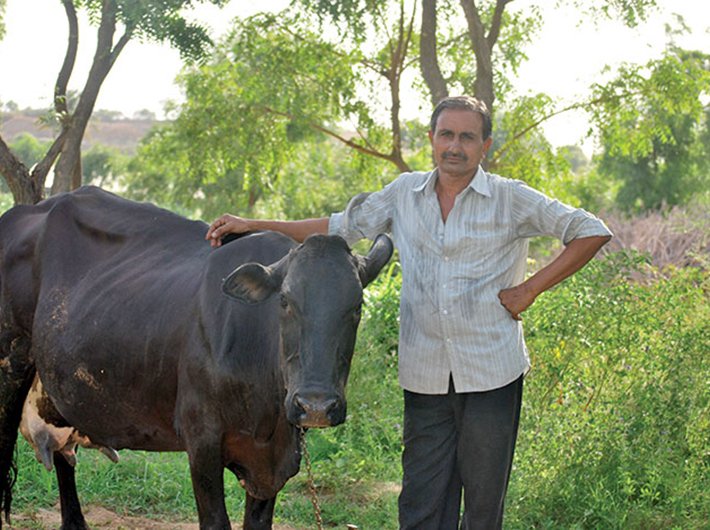The govt has failed to provide even a kilogram of millets even though the Right to Food Act included the provision.
Milk is one liquid that usually moves upwards, at least in economic terms. The poor can’t afford this important source of nutrition. But imagine children getting milk in schools as part of mid-day meals, and the poor getting some from public distribution system (PDS) shops. That is precisely what the agriculture ministry has in mind.
The ministry has written to all states to include milk in the mid-day meal (MDM) scheme for schoolchildren and even asked the department of food and public distribution to consider inclusion of milk in the public distribution system (PDS), according to media reports in early January. It has also requested the ministry of women and child development (MWCD) to include milk in the National Nutrition Mission through anganwadis.
“The department of animal husbandry, dairying and fisheries has issued an advisory on December 15 to states to include milk in the mid-day meal scheme, anganwadi scheme, etc. The department of food and public distribution was requested to consider inclusion of milk in the PDS. The ministry of women and child development was requested to include milk in the nutrition mission like anganwadi scheme (sic). This will increase the consumption of milk and subsequently better returns to dairy farmers even in flush season as well,” according to an official statement of January 2.
Policymakers at the Krishi Bhavan believe this will help dairy farmers in getting better returns throughout the year. That would help in the ministry’s plan to increase milk production to 255 million tonnes by 2022, which would contribute towards the government’s promise of doubling farmers’ income through multiple forms of farming activities.
This noble idea, however, does not seem realistic. Consider the logistics: supplying a perishable commodity like milk through ration shops or anganwadis or schools would require the setting up of chilling plants or cold chains in each village, or the linking up of various food and nutrition schemes with milk cooperatives.
The government’s wish to provide a daily source of calcium to more and more people also seems unrealistic given the fact that it has been unable to provide even a kilogram of millets, which are equally good sources of protein and calcium besides other nutrients even though the Right to Food Act included the provision.
Why not consider pulses and edible oil instead, asks Bhaskar Goswami, agriculture economist and formerly with the Food and Agriculture Organisation (FAO) of the UN. Moreover, he adds, while providing milk is theoretically a nice idea, it would mean that every PDS shop would require a refrigerator and uninterrupted supply of power which is never going to happen. “Eggs would be a better choice,” he says, though there are ideological constraints.
There lies the catch. The proposed milk push may have less to do with the desire to improve the nutrition status or improve farmers’ earnings. It may have to do with the attitude which has struck eggs off the mid-day meal scheme in some BJP-ruled states like Madhya Pradesh and Rajasthan.
Per capita availability of milk in India
1990-91: 176 grams per day
2014-15: 322 grams per day
World average: 294 grams per day
- India produces 18 percent of milk in the world
- Growth rate: 6.26 percent
Annual production
2015-16: 155.5 million tonnes
2014-15: 146.3 million tonnes
2012-14: 137.69 million tonnes
Source: Economic Survey 2015-16, official data
Prof Sukhpal, faculty at the centre for management in agriculture at IIM Ahmedabad, says the milk move might be aimed at replacing eggs in the MDM scheme. The government may be pushing a version of vegetarianism. Whatever be the motive, the outcome is not going to be help farmers much, he adds.
Each student may ultimately get, say, 100 ml of milk for Rs 2 – the final quantity would be very little compared to investment needed in logistics and other prerequisites, he says.
Would such a move help the politically charged cause of cows? Sukhpal argues that it would be mere lip service; the fate of cows would not improve with this as they need fodder which is not available most of the time.
Sukhpal agrees, as does everyone else, that milk is a commodity rarely consumed by the poorest of poor even if they have cattle and are in the business of milk. So if the government pushes through its plan to provide milk to ration-card holders, then poor families may get to consume some of the milk that they sell. They sell it for Rs 30 a litre and may get to buy some for, say, Rs 5. It would be like farmers selling grains in the market and then buying it for Rs 2 from ration shops, says Sukhpal.
Also, any addition in the articles supplied through PDS should be welcome – provided the PDS is functioning efficiently.
In Andhra Pradesh, for instance, the government has been promoting dairy farming. People get easy loans to buy cows. Many families in villages own a cow or two and many own goats. But the problem is that when drought hits villages, there is no fodder. No banks or government schemes provide for fodder, says Jaganmohan, project manager of NGO AP Mahila Abhivrudhi Society or APMAS.
He finds the idea of providing milk in PDS and MDM mind-boggling. “They will need to establish a cold chain for this. How can they reach rural areas where power supply is quite infrequent?” he asks.
But he agrees that the poor definitely don’t drink milk even though selling milk is the main alternative income for most farming families in Chittoor district where he works.
What could better serve the cultural agenda of anyone in the country is promotion of the indigenous food grains like millets. That would help farmers and would also enable them to cope with the uncertainties of weather related to climate change. Such crops require less water and are ideal for both food and fodder.
Rajasthan, Madhya Pradesh, Maharashtra, Andhra Pradesh and Karnataka used to grow and consume various millets like barley, ragi, jowar and bajra. They have been weaned away from it thanks to the cheap supply of rice and wheat in PDS shops during the past half century. But at least two states, Karnataka and Telangana, have recently introduced millets in both PDS and the MDM scheme following advocacy by NGOs.
feedback@governancenow.com

